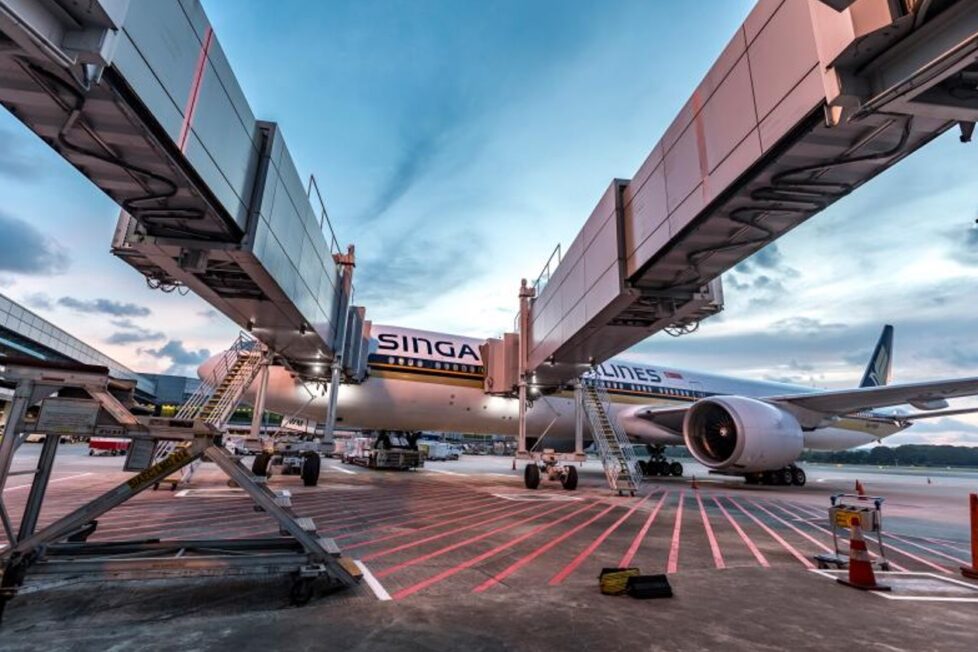Singapore to Require Sustainable Aviation Fuel Use on All Departing Flights from 2026

Singapore Minister for Transport Chee Hong Tat announced today the launch of the Singapore Sustainable Air Hub Blueprint, outlining a series of key actions aimed at decarbonizing Singapore’s aviation sector, including new rules mandating that all departing flights be required to use sustainable aviation fuel (SAF), beginning at 1% from 2026, and expected to increase in following years.
The blueprint was developed by Singapore’s Ministry of Transport’s Civil Aviation Authority of Singapore (CAAS), and encompasses actions targeting airlines, airports and air traffic management (ATM), in order to hit goals including reducing domestic aviation emissions from airport operations by 20% by 2030, and achieving net zero domestic and international aviation emissions by 2050.
Fuel accounts for the vast majority of the aviation sector’s emissions. Generally produced from sustainable resources, like waste oils and agricultural residues, SAF is seen as one of the key tools to help decarbonize the aviation industry in the near- to medium-term. SAF producers estimate the fuels can result in lifecycle GHG emissions reductions of as much as 85% relative to conventional fuels.
Efforts to meaningfully increase the use of SAF by airlines face significant challenges, however, including the low supply currently available on the market, and prices well above those of conventional fossil-based fuels. SAF currently represents less than 0.1% of jet fuel volumes.
According to the CAAS, the use of SAF is anticipated to contribute nearly two thirds of the emissions reductions required for the sector to reach net zero by 2050. Under the new blueprint, flights departing Singapore from 2026 will be required to use SAF, with an initial target of 1% anticipated, and a goal to raise this to 3% – 5% by 2030, subject to global developments and the wider availability and adoption of SAF.
The blueprint also includes several initiatives aimed at building an SAF ecosystem, including the introduction by the CAAS of a SAF levy, based on the SAF target and projected SAF price at that point in time, which will be used to purchase SAF. The levy charged will consider distance travelled and class of travel. According a CAAS estimate, the levy to support a 1% SAF level could increase the price of an economy class ticket from Singapore to Tokyo by S$6 (USD$4.50) and to London by S$16 (USD$12). Other initiatives include centralizing procurement of SAF for the Singapore air hub, anchoring SAF production in Singapore and the region, and investing in airline fleet renewal and operational improvements.
In addition to the SAF initiatives, the blueprint outlines actions for airports, primarily targeting reduced energy use and the deployment of renewable energy, as well as initiatives to improve ATM operations in order to increase efficiency and reduce fuel burn over the next five years, including the implementation of demand-capacity balancing, enhancements to performance-based navigation, and optimizing gate-to-gate trajectory. According to CAAS, the ATM initiatives are anticipated to result in a 10% additional fuel burn and emissions reduction.
The CAAS also outlined a series of enablers being introduced to implement its new decarbonization initiatives, encompassing policy and regulation, industry development, infrastructure planning and provision, workforce transformation, and international partnerships and collaborations, and including the launch of a S$50 million (USD$37 million) Aviation Sustainability Programme to support sustainable aviation projects.
Minister for Transport and Second Minister for Finance Chee Hong Tat said:
“Singapore’s approach is to enable the aviation sector to achieve both growth and environmentalEnvironmental criteria consider how a company performs as a steward of nature. More sustainability, so that future generations can continue to enjoy the benefits of flying. The Singapore Sustainable Air Hub Blueprint demonstrates this balanced approach. The measures were developed after careful study and close consultation with domestic and international stakeholders, and we hope that they will help to catalyse the development of sustainable aviation in the region and around the world.”